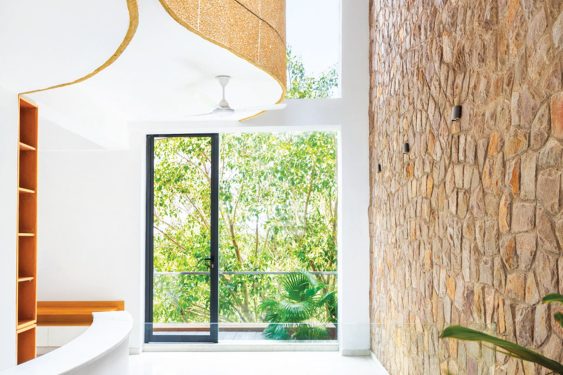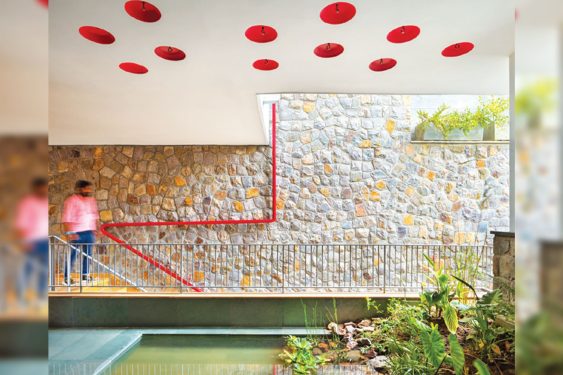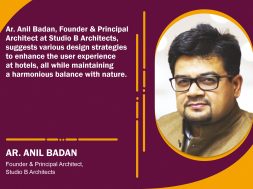A sustainable coexistence between humans and nature

Focused on a closed-loop sustainable system, the design engages in a conversation between flora, fauna, and architecture, aiming for a partnership where humans and nature stand as equals.
Discover the holistic approach of Archiopteryx to sustainable design, drawing inspiration from the intricate interactions between life, form, and the essence of harmonious living.
Can you provide an overview of the design concept for the project?
The rapidly expanding built environment is replacing the natural, negatively impacting the quality of all life, especially humans. The building places the ‘Peepal tree’ at the forefront of its design intent: the first point of ingress for insects, birds, and reptiles, forming a closed-loop sustainable system. Considering flora and fauna as inhabitants of this architecture, an attempt is made to initiate a conversation where the two elements of flora and fauna are more than utilities. There is no intention to anthropomorphise them, aiming for a scenario where human beings and nature are equal partners without dominating the other. Taking climatology, environmental responsiveness, and efficient use of renewable resources as essentials, the building focuses on the effects of nature and the natural form and function on the quality of life for human beings.

Can you explain how you approached the sustainable design of the house, and did you face any challenges?
“Architecture is not form, but the interactions between life and form, and only if life and form interact in a good and successful way will it be good architecture.” Jan Gehl: Archaeopteryx began the design process by studying flora and fauna in the surrounding neighbourhood. Understanding the fruiting and flowering vegetation and locally present avian and insect life allowed the architects to determine gestures toward furthering their ideas for a harmonious coexistence between the residents. Great inspiration was drawn from our clients: avid nature and life enthusiasts who actively participated in multiple discussions at various stages with like-minded consultants and knowledge givers to enrich and contribute to the process.

Why do you think creating a ‘sustainable, harmonious relationship’ between humans and the environment is important?
A harmonious interaction between biodiversity, humans, and architecture is widely beneficial to human health and well-being, demonstrated through increased happiness, health, and cognition. There is a growing concern that the global loss of biodiversity impoverishes the human species, creating conditions for a solitary existence. Humanity is only one of many presences on the planet, emphasising the need to find new forms of harmonious coexistence with its inhabitants. Although the criterion of energy sustainability is part of the fundamental principle of “green” architecture, the consideration that flora and fauna are equal ‘inhabitants of architecture’ results from a vision that prioritises biodiversity before sustainability. The increased possibility of flora attracting birds, insects, and animals for feeding and pollination allows for a self-sustaining closed loop that rejects the artificial and embraces the natural.

Can you elaborate on the materials used to design the exterior and interior?
Locally sourced and hand-crafted random rubble masonry and yellow grit wash plaster have been used for the linear and curved walls, respectively. These materials adorn the interior and exterior surfaces, extending continuity to the volumes. Load-bearing brick vaults have been supported with metal beams embedded within concrete. The metal detailing is kept honest with exposed nuts and bolts finished with Duco paint wherever visible. The interior curved walls of the stairwell are finished with stained plaster and coats of coconut oil. Indian white marble and yellow sandstone for the flooring and external surfaces complement the earthy colour palette.
For more info visit: http://archiopteryxarchitects.com/
19
Cookie Consent
We use cookies to personalize your experience. By continuing to visit this website you agree to our Terms & Conditions, Privacy Policy and Cookie Policy.










